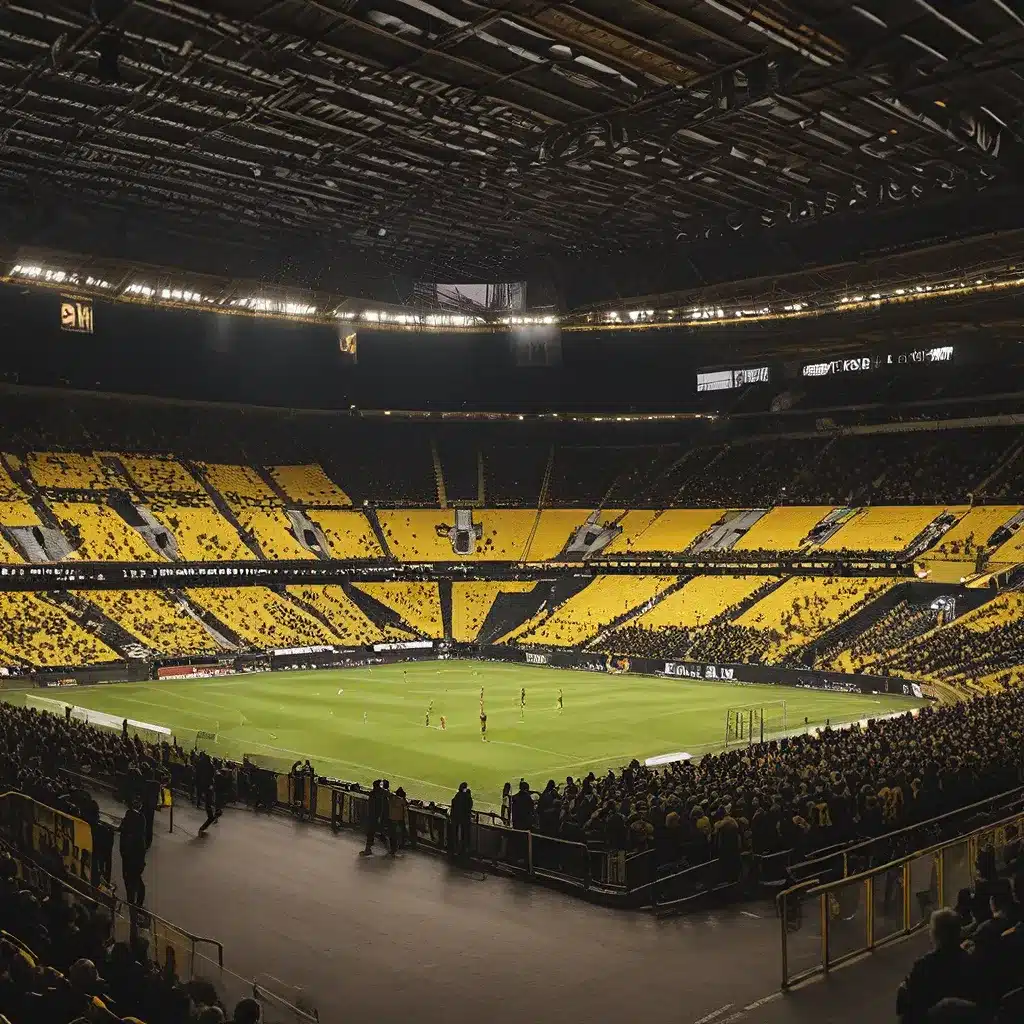
Nestled in the heart of Dortmund, Germany, the Signal Iduna Park stands as a testament to the passion and history of the Borussia Dortmund football club. This iconic stadium, formerly known as the Westfalenstadion, has been the team’s home ground since its inauguration in 1974, and its evolution over the past five decades has been nothing short of remarkable.
The Birth of a Legend
The origins of the Signal Iduna Park can be traced back to the 1960s, when Borussia Dortmund outgrew its former home, the Stadion Rote Erde. With the club’s growing popularity and the increasing demands of modern football, it became clear that a new, larger stadium was needed. After years of planning and construction, the Westfalenstadion was finally completed in 1974, just in time for the 1974 FIFA World Cup, which was hosted in West Germany.
The stadium’s initial capacity was set at 54,000, making it one of the largest in the country at the time. Its distinctive architecture, featuring a unique roof design and a steep, intimidating south stand, quickly earned it a reputation as one of the most atmospheric and imposing stadiums in the Bundesliga.
The Transformation of an Icon
Over the years, the Signal Iduna Park has undergone a series of renovations and expansions to keep up with the changing needs of the sport and its supporters. In the 1990s, the stadium underwent a major overhaul, with the addition of a new, all-seater north stand and the expansion of the south stand, now known as the “Yellow Wall.”
The Yellow Wall, with its capacity of over 25,000 standing supporters, has become one of the most iconic features of the Signal Iduna Park. This massive, towering stand is renowned for its incredible atmosphere, with fans creating a deafening wall of sound that has been known to rattle even the most experienced players.
Recent renovations have also transformed the stadium’s exterior, with the addition of a sleek, modern facade that seamlessly blends the old and the new. The stadium’s capacity has been increased to over 81,000, making it one of the largest football stadiums in Germany and Europe.
The Heart and Soul of Borussia Dortmund
The Signal Iduna Park is not just a stadium; it is the very heart and soul of Borussia Dortmund. The club’s passionate supporters, known as the “Yellow Wall,” have created an unparalleled atmosphere within the stadium, transforming it into a cauldron of energy and excitement on match days.
The stadium’s 50th anniversary in 2024 was a particularly momentous occasion, as it celebrated the rich history and enduring legacy of Borussia Dortmund’s home ground. Fans, players, and club officials alike reminisced about the countless unforgettable moments that have unfolded within the stadium’s walls, from championship-winning celebrations to dramatic comebacks and heartbreaking defeats.
A Fusion of Tradition and Innovation
As Borussia Dortmund continues to evolve, so too does the Signal Iduna Park. The club’s recent partnership with sportswear giant PUMA has seen the introduction of a new home kit for the 2024/25 season, which takes inspiration from the club’s iconic 1996/97 European home kit. The new design features a sleek, minimalistic look with vertical pinstripes, paying homage to the club’s rich tradition while also offering a fresh, modern twist.
Moreover, the club’s commitment to sustainability is evident in their use of the REFIBRE initiative, which aims to create a more circular and sustainable approach to producing football jerseys. This innovative approach aligns with the club’s vision of preserving its heritage while also embracing the challenges of the future.
A Hub of Excitement and Inspiration
The Signal Iduna Park is more than just a football stadium; it is a hub of excitement, inspiration, and community. The stadium’s unique atmosphere and rich history have made it a must-visit destination for football fans from around the world, who flock to Dortmund to experience the thrill of a match at this iconic venue.
Beyond the matchday experience, the Signal Iduna Park also serves as a canvas for the club’s commitment to social responsibility. The stadium has hosted numerous community events, educational programs, and charitable initiatives, further cementing its place as a beloved institution within the city of Dortmund.
As Borussia Dortmund continues to write new chapters in its storied history, the Signal Iduna Park will undoubtedly remain at the center of it all, a testament to the enduring power of football and the unwavering passion of its supporters. For those seeking to explore the rich tapestry of European football stadiums, a visit to the Signal Iduna Park is a must, as this historic venue promises to leave a lasting impression on all who experience its magic.

